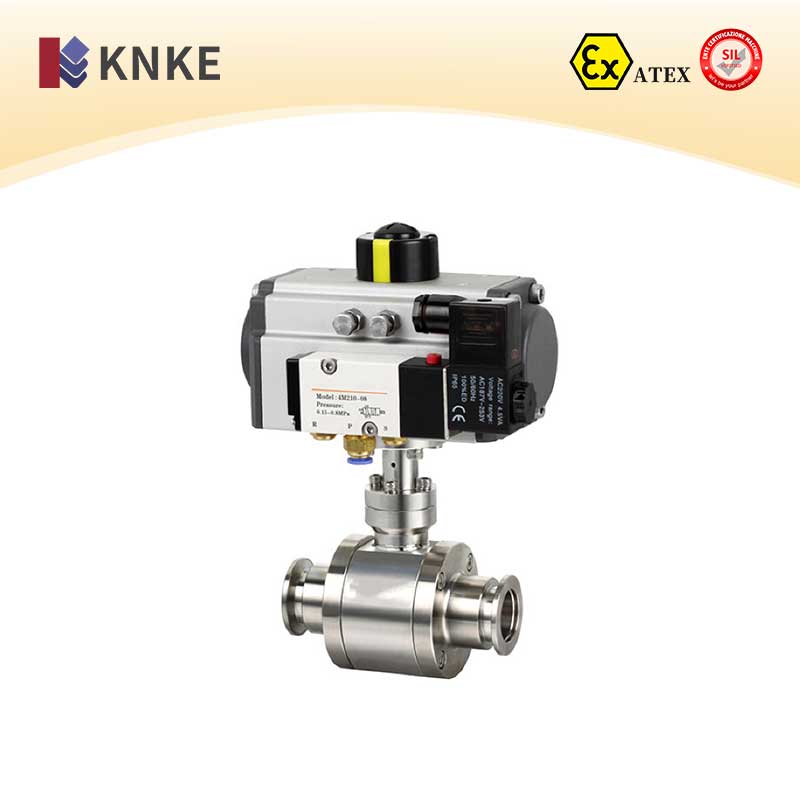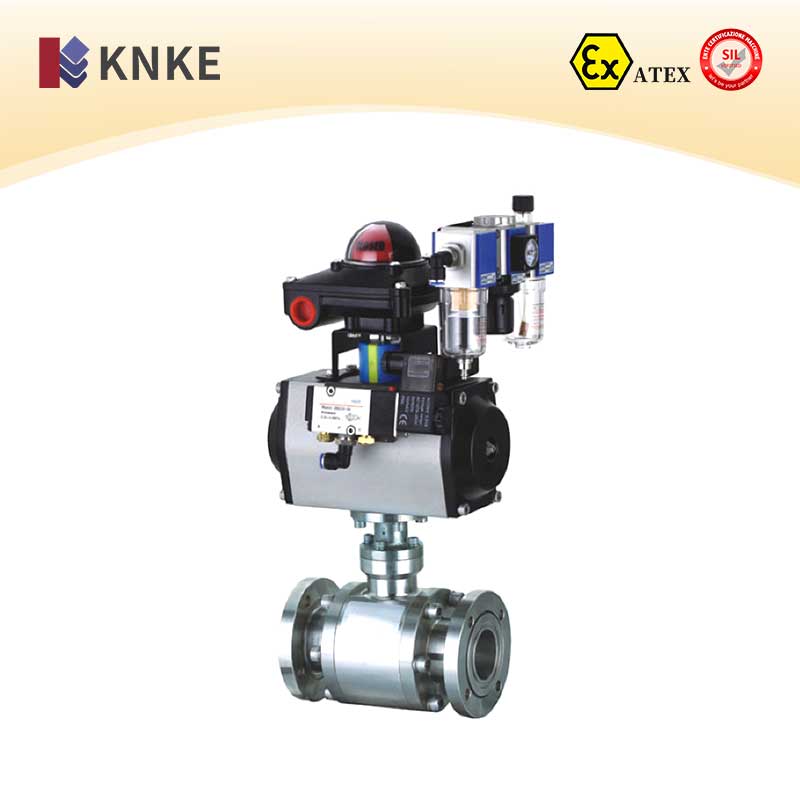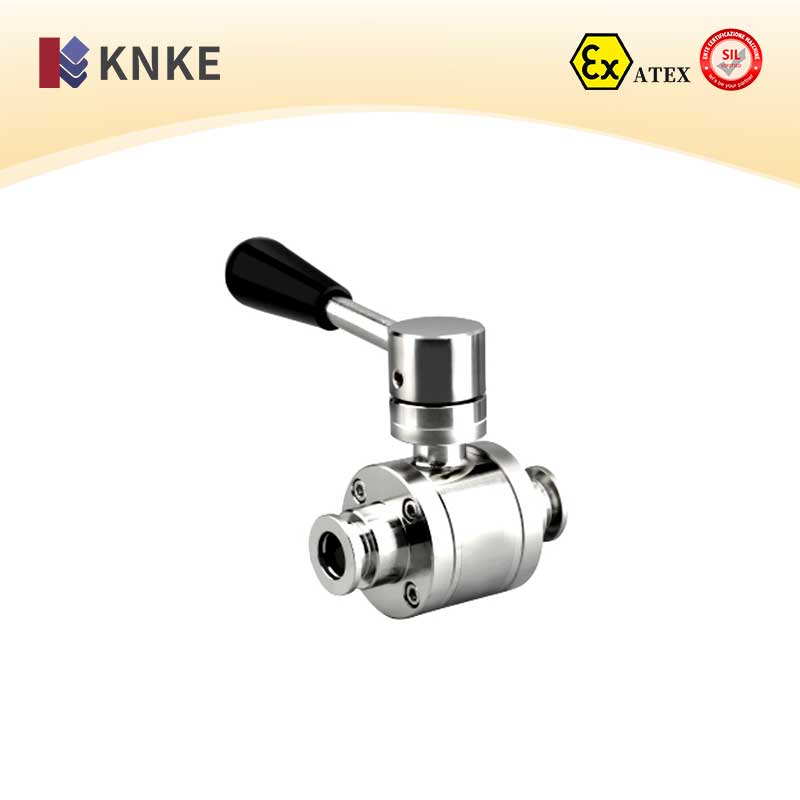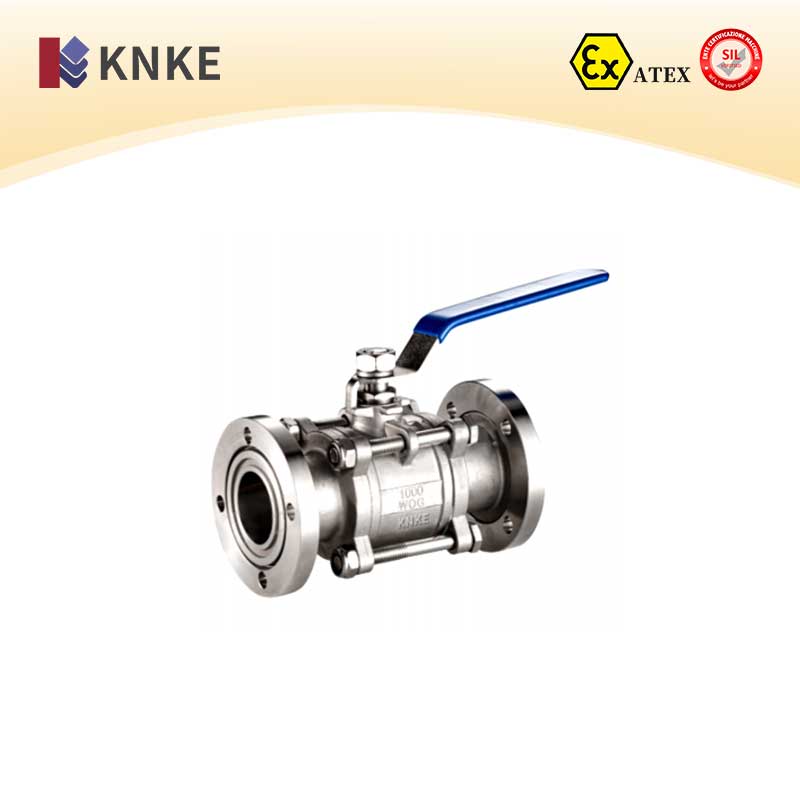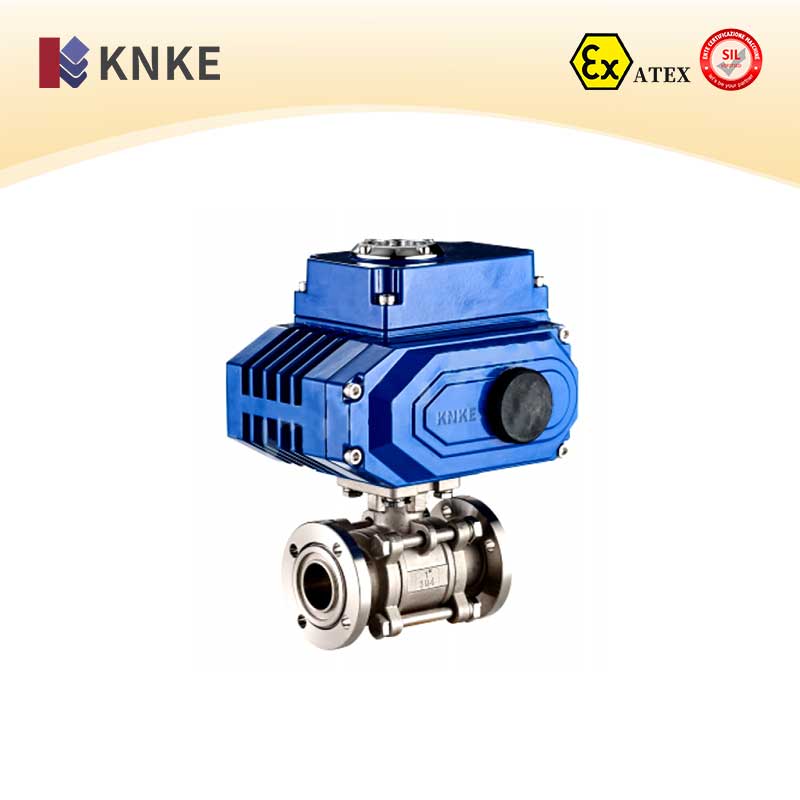Description
Overview of KNKE Vacuum Ball Valves
KNKE vacuum ball valves feature a straight-through design with dual spherical sealing surfaces. This design ensures efficient performance under both vacuum and low-pressure conditions. Users can install these valves in any position to control or block media flow in vacuum system pipelines. Additionally, feedback signal devices and electric valve positioners can enable motorized operation, offering flexibility for both positive and negative pressure pipeline systems. Covering an operating pressure range of 1.3×10-7 to 6×105 Pa, these valves comply with GMP standards. They are widely used in vacuum applications, dairy, brewing, bioengineering, food processing, pharmaceuticals, beverages, cosmetics, and chemical industries.
KNKE Vacuum Ball Valve Selection Parameters
| Parameter | Specification |
| Product Name | Vacuum Ball Valve |
| Nominal Diameter | DN10 to DN300 |
| Structure Type | Spherical |
| Nominal Pressure | 1.6Mpa to 6.4Mpa |
| Connection Type | Flange, Threaded, Quick-release Flange, Union |
| Operating Temperature | ≤180℃ |
| Actuation Mode | Manual, Pneumatic, Electric |
| Body Material | Cast Steel, Stainless Steel |
| Standards | GB, DIN, API, ANSI |
| Applicable Media | Air, Gas, Oil, Liquid |
KNKE Vacuum Ball Valve Description
KNKE vacuum ball valves control or block media flow in vacuum (pressure) system pipelines. Their design ensures stable performance and excellent sealing properties, making them ideal for high-vacuum applications. These valves serve industries such as vacuum systems, dairy, brewing, bioengineering, food processing, pharmaceuticals, beverages, cosmetics, and chemicals.
Key Component Materials
- Body, Cover, Stem: Stainless Steel
- Sealing Materials: PTFE, Nitrile Rubber, Fluoro Rubber, PPL
Key Features of KNKE Vacuum Ball Valves
- Versatility: They work in both high vacuum and low-pressure systems, supporting positive and negative pressure requirements.
- Efficient Pneumatic Operation: Pneumatic vacuum ball valves operate with low torque and quick actuation, ensuring energy efficiency.
- Flexible Installation: Multiple connection types accommodate various complex working conditions.
- Optimized Structure: The simple design provides excellent sealing performance, adaptable to different environments.
- Broad Applications: These valves support vacuum systems, dairy, brewing, bioengineering, food, and chemical industries, ensuring long-lasting reliability.
KNKE Vacuum Ball Valve Connection Methods
Flange Connection
Flange connections, the most common method, are categorized by mating surface shapes:
- Smooth: Suitable for low-pressure valves and easy to process.
- Raised Face: Works well in higher-pressure applications and pairs with medium-hard gaskets.
- Tongue and Groove: Offers excellent sealing, widely used in corrosive environments.
- Trapezoidal Groove: Uses oval metal rings, suitable for valves operating at pressures ≥64 kg/cm² or high temperatures.
- Lens Type: Incorporates lens-shaped metal gaskets for high-pressure (≥100 kg/cm²) or high-temperature valves.
- O-ring Type: Utilizes rubber O-rings for superior sealing compared to flat gaskets.
Threaded Connection
Threaded connections suit smaller valves and come in two forms:
- Direct Sealing: Internal and external threads seal the joint, often enhanced with PTFE tape.
- Indirect Sealing: Tightened threads compress a gasket between two surfaces to achieve a seal.
Key Technical Specifications of KNKE Vacuum Ball Valves
| Performance Indicator | Technical Specification |
| Valve Leak Rate | ≤1.3×10-4 Pa.L/S |
| Operating Temperature | -30 to +150℃ (PPL Seal) |
| Application Scope | Vacuum Systems |
| Flange Connection Types | Loose Flange, Welded Flange, Quick-release Flange |
| Operating Pressure Range (Pa) | 0.6×106 to 1.3×10-4 |
| Threaded Pressure Range (Pa) | 1.6×106 to 1.3×10-4 |
KNKE vacuum ball valves deliver superior sealing performance and extensive applicability, making them reliable choices for vacuum and complex operating systems.
Frequently Asked Questions
1. Are KNKE vacuum ball valves suitable for high-temperature environments? Yes, KNKE vacuum ball valves operate within a temperature range of -30℃ to +150℃. Models with PPL seals can handle higher temperature requirements.
2. How do I choose the appropriate connection type? Selecting a connection type depends on working conditions, such as pressure, temperature, and installation requirements. Available options include flanged, threaded, quick-release flange, and union connections.
3. What industries benefit from KNKE vacuum ball valves? They serve industries like vacuum systems, dairy, brewing, bioengineering, food processing, pharmaceuticals, beverages, cosmetics, and chemicals.
4. How is sealing performance ensured? KNKE vacuum ball valves use high-quality sealing materials like PTFE and fluoro rubber. Advanced designs ensure stable and long-term sealing.
5. Is customization available? Yes, KNKE provides tailored solutions, including special materials, dimensions, and features, to meet specific client requirements.
With these features, KNKE vacuum ball valves offer robust solutions for demanding industrial applications.

